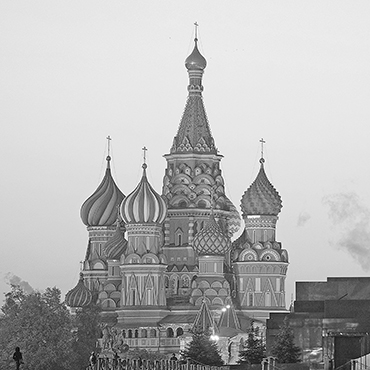TARGET: FINLAND... AND BEYOND
Although its military is stretched thin in Ukraine, the government of President Vladimir Putin is still increasingly setting its sights on the Nordic states. Russia has reportedly deployed more than 300 additional troops to its border region with Finland, augmenting forces already stationed there. The latest deployment includes veterans of combat in Ukraine, as well as signals intelligence and electronic warfare specialists. But, while notable, defense experts say that the latest deployment, as well as past ones, fall short of indicating an imminent Russian military threat to NATO.
Nevertheless, there is cause for concern. According to Finnish military analyst Emil Kastehelmi, the deployments signal broader changes in Russia's defense posture to facilitate the deployment of "tens of thousands" of additional forces to the region in coming years. Even before it does, however, observers worry that the deployments could be a prelude to increased "grey zone" activities by Moscow aimed at undermining adversary interests without outright confrontation. Indeed, the Finland border region has been repeatedly targeted with GPS "spoofing," jamming civilian aircraft navigation signals. Open-source data indicates that many of these attacks originate in Kamenka and Kamenogorsk – two Russian cities near the Finnish border.
The build-up, moreover, occurs at a time of strategic vulnerability for Europe, as the Trump administration mulls decreasing its investment in NATO. And should a peace deal between Moscow and Kyiv be reached soon, the International Institute for Strategic Studies has projected Russia could rebuild its armed forces to pre-invasion levels in less than two years, with the potential to credibly challenge NATO by as early as 2027. (The iPaper, May 18, 2025)
MOSCOW VERSUS FOREIGN TECH
Russian officials are seeking to replace foreign technology firms operating in the country with domestic alternatives. In response to complaints from Russian tech company Iva Technologies that it was "losing billions" due to competition from Zoom and Microsoft, Russian President Vladimir Putin has declared that Western tech companies remaining in the country must be "strangled." Since February 2022, hundreds of Western companies have withdrawn from Russia, with the Kremlin imposing steep exit costs for the few that remain. President Trump's efforts to secure a peace deal have led to rumors that Western companies will again seek to do business in Russia. However, Putin is promising protectionist obstacles for those that attempt to return, and neither Western business tycoons nor officials in Moscow have confirmed concrete interest in reestablishing operations in Russia, at least so far. (The Moscow Times, May 27, 2025)
RUSSIA EYES ZAPORIZHZHIA'S POWER
Satellite images gathered by eco-activist group Greenpeace reveal that Russia has constructed new power lines in occupied southeastern Ukraine, likely with the goal of connecting the Zaporizhzhia nuclear plant to its own energy grid. Capable of producing up to six gigawatts of electricity, Zaporizhzhia serves as Europe's largest power plant. Before Russia's full-scale invasion, it supplied Ukraine with a quarter of its power.
Harnessing Zaporizhzhia's power has been a longstanding goal of the Kremlin. Since its capture in March 2022 and subsequent deactivation, President Putin has signaled his intent to restart the plant in a number of official statements. However, experts have cautioned against doing so, since its proximity to frontline combat has led to repeated concerns about an accidental nuclear disaster.
The plant is now controlled by Russia's state-owned nuclear giant ROSATOM, whose head, Alexei Likhachev, has declared that "everyone is living with the dream of restarting the plant," and restoring it to full capacity. Satellite imagery reveals that, since early February, Russia has constructed 50 miles of electricity lines and pylons linking Mariupol and Berdyansk, but more infrastructure still needs to be built in order to restart the plant. Other problems also persist; most of the plant's experienced Ukrainian staff have fled, and Russia's 2023 destruction of a nearby dam eliminated a vital water source for the plant. (New York Times, May 27, 2025)
Want these sent to your inbox?
Subscribe
Russia Policy Monitor No. 2679
Related Categories:
Europe Military; Warfare; NATO; Resource Security; Border Security; Europe; Russia; Ukraine

